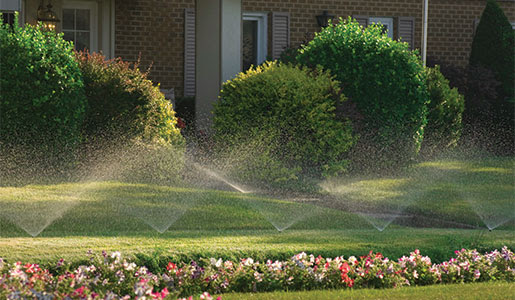A lot of factors contribute to what makes a lawn lush, green, and healthy. Lawns, like any living thing, need plenty of water in order to survive. But did you know that your watering routine can have a major influence on whether or not your lawn develops fungal disease?
Many types of lawn fungus exist and can cause varying degrees of damage. A few mushrooms popping up here and there are no big deal, but some fungi can injure or even kill whole sections of turf. While different fungi prefer slightly different conditions, most thrive where there are extended periods of overnight moisture. This is where your watering routine can make a big difference.
If at all possible, it is best to water your lawn before noon. The hotter hours of the afternoon are inefficient as water can more easily be lost to evaporation. Watering later in the day or in the evening opens the door to potential fungal growth. The goal should be to have a dry lawn by the time the sun goes down. Watering early in the day limits evaporation loss and allows plenty of time for maximum absorption.
For this strategy to work, your lawn needs to be able to soak up water successfully. If drainage issues are leading to standing water when you irrigate, they will need to be addressed. Keep an eye on turf areas after watering and make sure there is no pooling or runoff. Ideally, your lawn will receive relatively infrequent watering sessions that thoroughly soak the turf. With proper watering, your lawn will be robust and disease-free.



